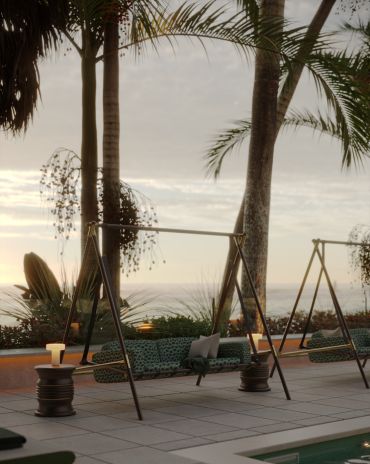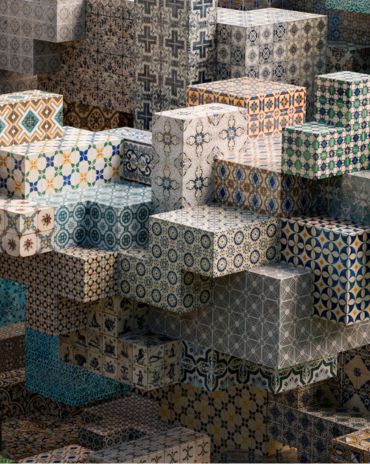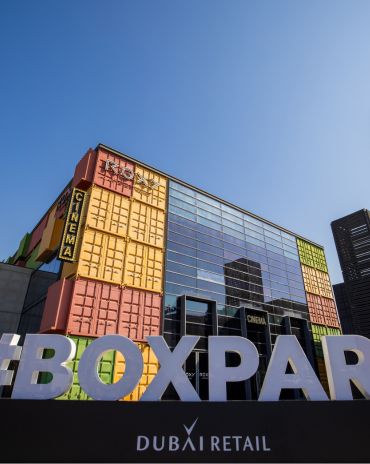Copyright © 2025 Motivate Media Group. All rights reserved.
Choosing the Unconventional – Altqadum
Altqadum blends history, culture and archival research prowess with a contemporary outlook across their practice
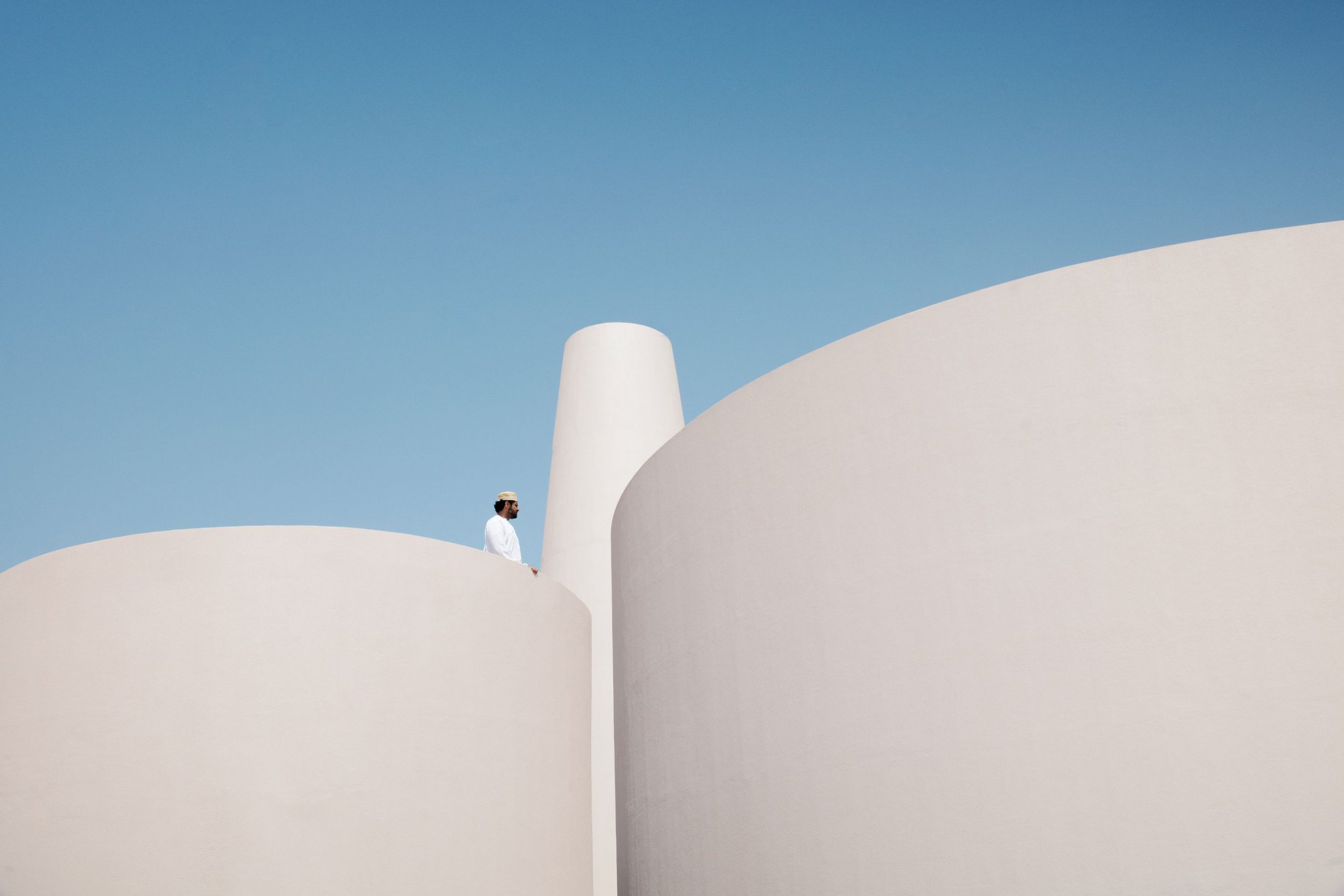
Marwan AlBalushi started his career after graduating from University of the Arts London, where he earned a Bachelor of Arts (BA) in Interior and Spatial Design and moved to Dubai to work with a couple of friends in the industry who have their own design studio. The experiences taught him a key lesson. “It is very important who you choose to work with,” he says. He then worked on a few projects in Lebanon before moving back to Oman and applying to be part of an international architectural practice. After walking in to do the interview, he glimpsed the bright lights, multiple desks and meeting rooms, and decided to walk away without giving his interview, knowing he didn’t belong. A chance encounter with two project management professionals outside the firm’s building gave him the confidence to start his own practice. Initially working as an independent consultant on smaller projects, AlBalushi soon crossed paths with Abdulrahim Al Kendi, an artist with a deep passion for documenting Omani architecture and culture. His meticulous archival skills and cultural insights became the cornerstone of Altqadum’s research-driven approach, and with his input, the firm began to explore Omani identity, documenting the nuances of traditional architecture. Architect Najd Al Balushi later joined the team, rounding out the trio that forms Altqadum, which means ‘progress’ – an apt name for the firm that heavily dives deeper into the meaning of design with a stronger context and the firm’s dedication to endless possibilities.

One of Altqadum’s landmark projects, the Bab Al Salam Mosque, began in 2018 when AlBalushi was invited to review the project. The project underwent such a transformative change due to his input that he was given the responsibility of ensuring its completion. This mosque, now celebrated for its sculptural forms and innovative design, took more than five years to complete. “Omani architecture is all about the small details,” says AlBalushi. The design process required extensive research and collaboration, leading to a mosque that reflects the deeper cultural and spiritual aspect of Omani society. Unconventional yet rooted in tradition, the building’s design is a bold departure from standard mosque architecture. It not only doesn’t follow the conventional design and style of other mosques – it also has no boundaries. AlBalushi and his team carefully studied how people were brought in and out of mosque gatherings and worked on addressing the physical and spiritual aspects that may help elevate the overall praying experience.
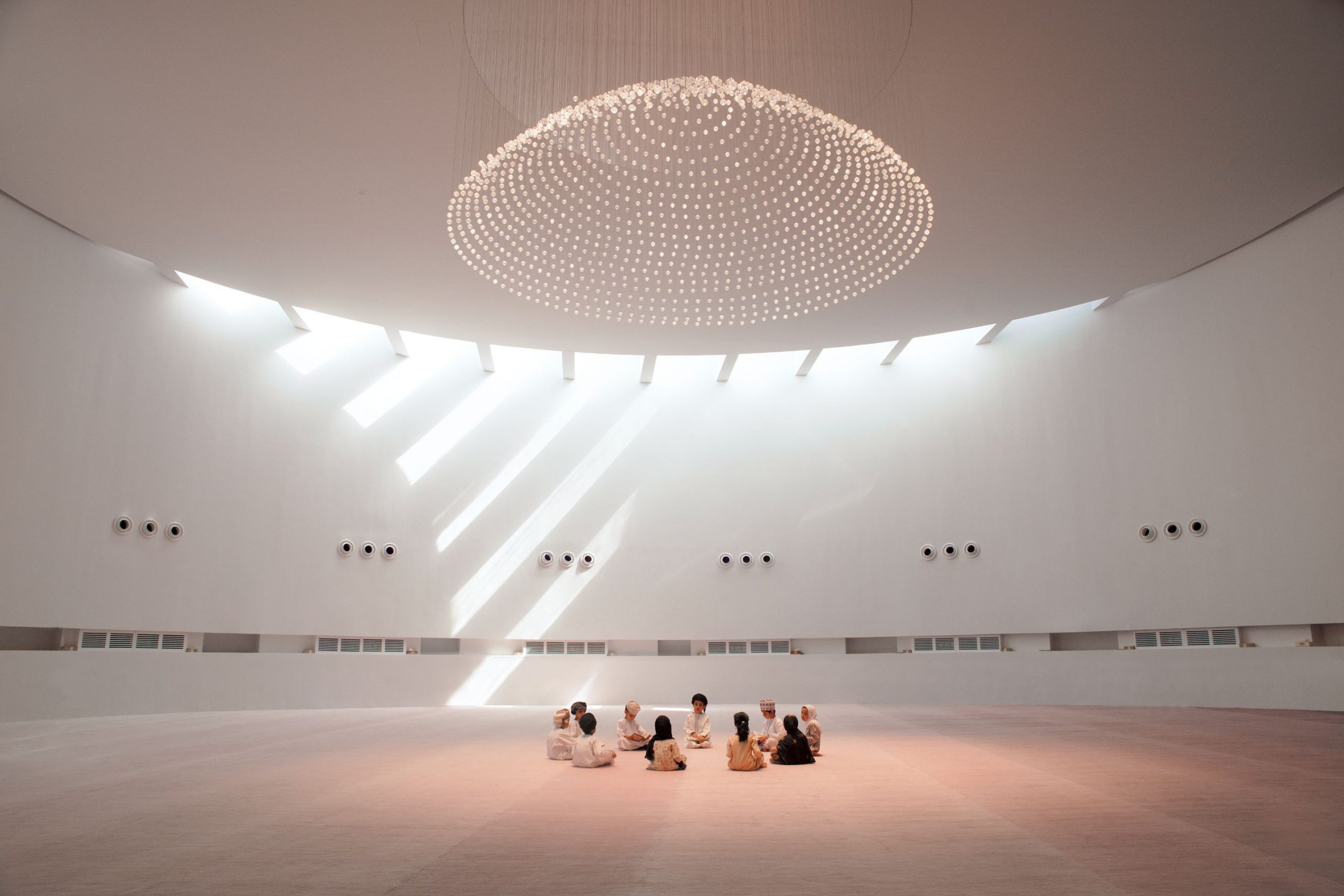
The minaret/women’s prayer hall stands tall at 30 metres, offering a spacious and empowering environment for female worshippers. AlBalushi acknowledges that the project carried inherent risks, but his dedication to the research ensured its success. Altqadum used a unique vernacular architectural approach; one that focused on bringing back Omani identity. The mosque has received widespread acclaim, both locally and internationally, and Al Balushi remains grateful to the surrounding community, having penned a letter of thanks to them. A key differentiating factor for Altqadum as a practice is their work with cultural initiatives. On one of their weekly ‘pitch Thursdays’, AlBalushi and his team focused on documenting the landscape of Muscat and Oman, centring around five local buildings within a five-year window. They partnered with renowned photographer and artist Hassan Hajaj and the Ministry of Culture on several initiatives and campaigns.



One of the product designs that has drawn attention to the Altqadum practice was BARIID, which was recently displayed at the Design Doha Biennial. Based on the design of a chair’s silhouette, the practice wanted to both reinvent and simplify the overall look. “We wanted to exaggerate a feeling,” AlBalushi says. The chair was one of the first products designed by Altqadum and received great interest because of its unique launch. Owing to the tactile coolness of the material, the team decided to freeze it completely into a block of ice and then let it melt away over three to four hours, revealing the chair. In the harsh summer, the ice melted away, but the chair retained its coolness, offering relief. The virality of this approach caught the attention of Sheikha Al-Mayassa bint Hamad Al Thani, the sister of Qatar’s ruling Emir who requested the Design Doha Biennial team to invite the practice to showcase the chair at the event. The Altqadum team worked with Bait Al Zubair – a local museum that supports Omani culture – to bring the chair to the biennial. They have now been offered to make it a permanent exhibition.
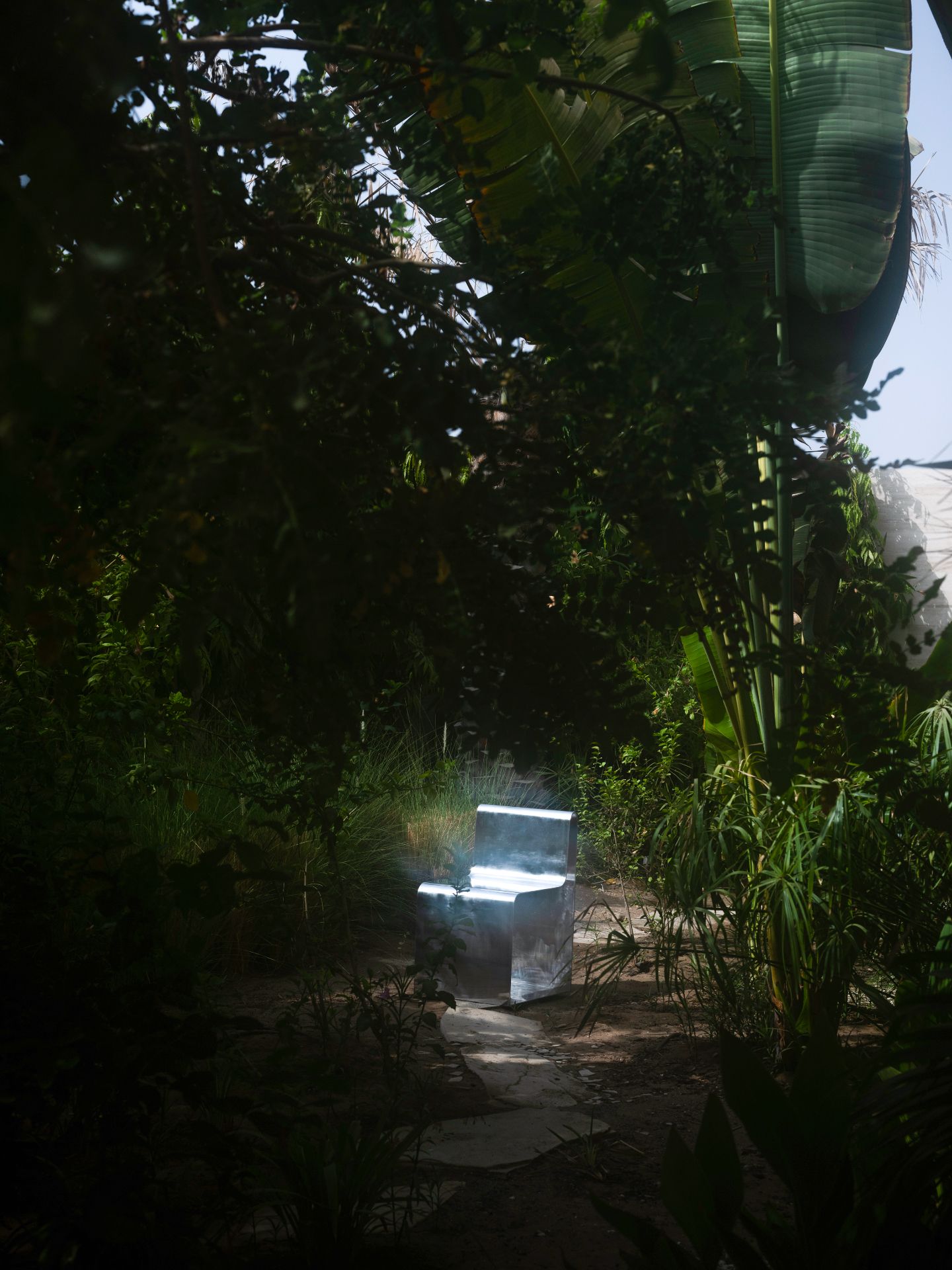
For the Urban Commissions 2024 competition at Dubai Design Week, which centred around the theme of ‘tawila’, meaning table, the focus was on the table as a symbol of human interaction – a platform for dialogue, creativity and communal experiences. Whether in homes or public spaces, tables have long served as unifiers, fostering connections and facilitating the exchange of ideas and traditions across cultures. Altqadum’s winning response to this theme was ‘TukTuKDum’, an innovative table concept that merges design with Omani musical culture, where communities traditionally gather around and accompany musicians.
The concept encourages audience interaction, inviting them to become performers and an integral part of the table itself. In this design, the large dining table’s legs are traditional Omani drums, transforming a functional object into a dynamic, musical experience. To further amplify the project’s impact, Altqadum is collaborating with Omani musicians to showcase the table’s utility in an immersive and culturally rich display at the launch. Reflecting on the creative process, Al Balushi explains that the idea stemmed from the importance of gatherings around the table. Seeking a local Omani context, the team found their answer in music – a cornerstone of Gulf traditions. AlBalushi expresses excitement about how people will interact with ‘TukTuKDum’.
As Altqadum continues to expand its portfolio, the trio are currently working on projects across the UAE, including a mosque in Sharjah, the redesign of an office building in Dubai Media City, homes in Jumeirah and Abu Dhabi, and a new restaurant in Dar Al Wasl. “We practice as a normal architectural firm does, but we’re growing in an organic way,” AlBalushi says.
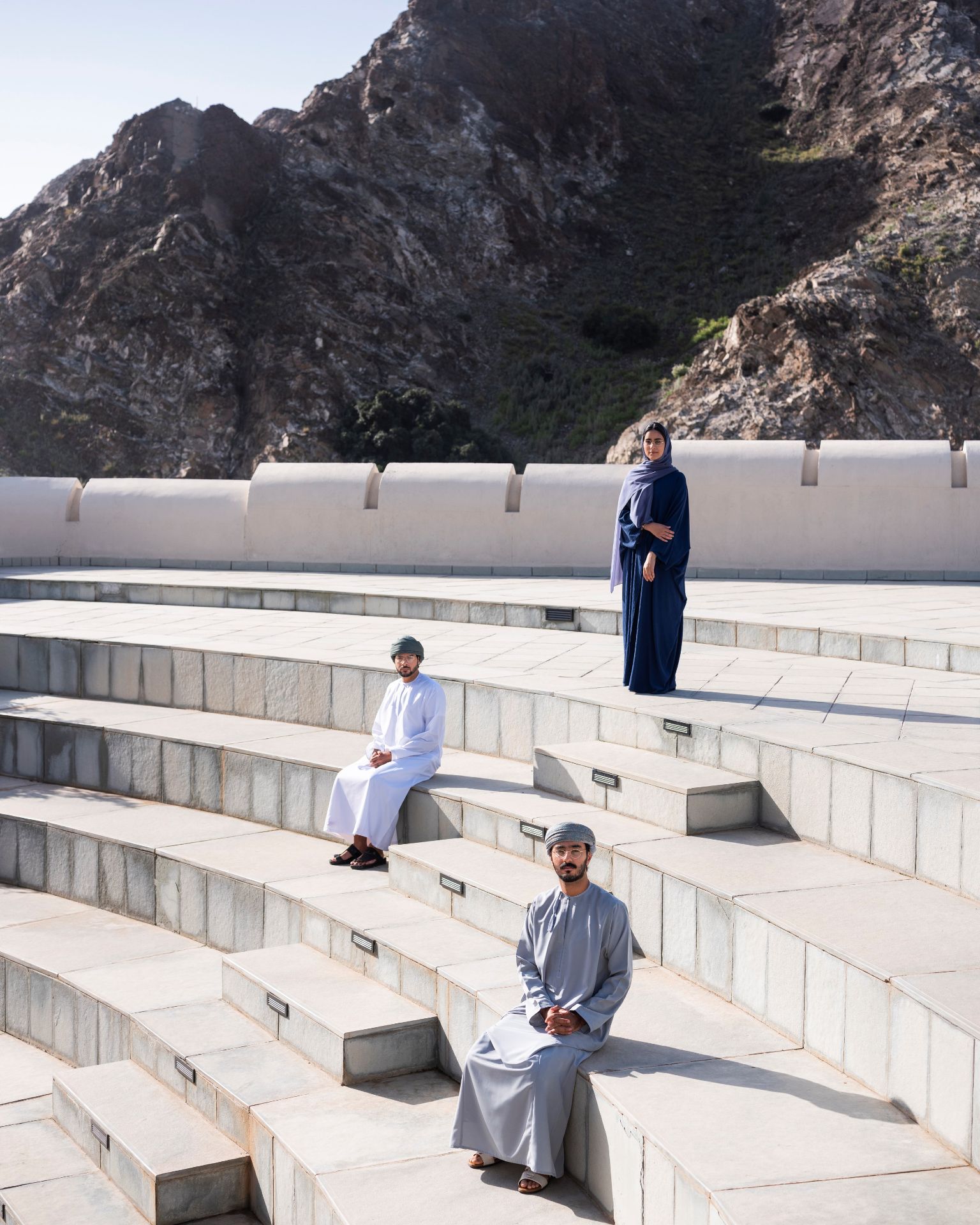
Altqadum’s commitment to documenting and revitalising Omani architectural heritage has become the studio’s signature. As it continues to collaborate with cultural institutions and expand into the UAE, the firm’s influence is steadily growing, proving that a balance between the past and the present can create spaces that resonate on both a personal and cultural level.
Photography by Reem Falaknaz & Altqadum
The Latest
Maison Aimée Opens Its New Flagship Showroom
The Dubai-based design house opens its new showroom at the Kia building in Al Quoz.
Crafting Heritage: David and Nicolas on Abu Dhabi’s Equestrian Spaces
Inside the philosophy, collaboration, and vision behind the Equestrian Library and Saddle Workshop.
Contemporary Sensibilities, Historical Context
Mario Tsai takes us behind the making of his iconic piece – the Pagoda
Nebras Aljoaib Unveils a Passage Between Light and Stone
Between raw stone and responsive light, Riyadh steps into a space shaped by memory and momentum.
Reviving Heritage
Qasr Bin Kadsa in Baljurashi, Al-Baha, Saudi Arabia will be restored and reimagined as a boutique heritage hotel
Alserkal x Design Miami: A Cultural Bridge for Collectible Design
Alserkal and Design Miami announce one of a kind collaboration.
Minotticucine Opens its First Luxury Kitchen Showroom in Dubai
The brand will showcase its novelties at the Purity showroom in Dubai
Where Design Meets Experience
Fady Friberg has created a space that unites more than 70 brands under one roof, fostering community connection while delivering an experience unlike any other
Read ‘The Winner’s Issue’ – Note from the editor
Read the December issue now.
Art Dubai 2026 – What to Expect
The unveils new sections and global collaborations under new Director Dunja Gottweis.
‘One Nation’ Brings Art to Boxpark
A vibrant tribute to Emirati creativity.
In conversation with Karine Obegi and Mauro Nastri
We caught up with Karine Obegi, CEO of OBEGI Home and Mauro Nastri, Global Export Manager of Italian brand Porada, at their collaborative stand in Downtown Design.












